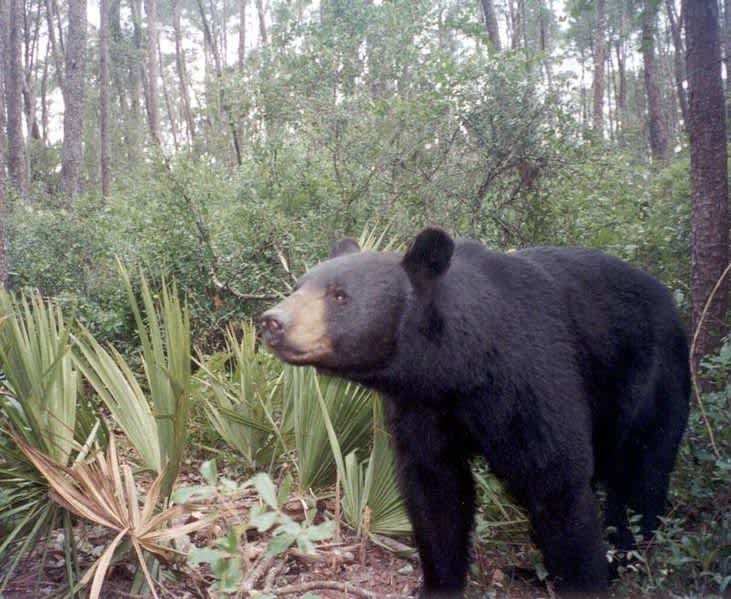Florida Officials to Count Black Bear Population for First Time in 12 Years
OutdoorHub Reporters 06.03.14

Black bears seem to make the news in Florida with increasing regularity, yet the state’s Fish and Wildlife Conservation Commission (FWC) still lists the population at a minimal 3,000. The truth is, biologists can only guess at the true number of bears living in Florida today. The last survey was completed in 2002, when the FWC estimated that there were between 2,500 to 3,000 of the animals roaming the state.
“We’re pretty sure it’s going to be a whole lot more than that now,” FWC biologist Walter McCown told The Orlando Sentinel.
McCown and his fellow biologists spent last week baiting hair snares with doughnuts and other bear-preferred treats. The animals will leave the baiting sites with a belly full of food, but the hair they leave behind will used in two-year project to calculate just how many bears are in the state. Over the next few months the FWC will build an additional 300 baiting sites, including some in the bear-dense Ocala National Forest.
Bear sightings were considered rare a few decades ago. The FWC declared the black bear endangered in 1994, when the population hovered at around 1,280. In the decade before that, there were as few as 300 bears in the state. By all means the recovery has been highly successful, but it now leaves the FWC grappling with an uptick of bear-human conflicts. According to the FWC, statewide bear calls in 2013 rose to 6,667. There were only 99 calls in 1995.
“Problems arise when bears have access to food sources such as pet foods, garbage, barbecue grills, bird seed or even livestock feed,” the FWC warns on its website. “Bears are adaptable and learn very quickly to associate people with food. Even though black bears are normally too shy to risk contact with humans, their powerful need to find food can overwhelm this fear.”
Two bear attacks in the last half year included the worst bear mauling in the state’s history. In April, the FWC killed nine bears believed to be involved in one of the attacks. With the bear population now estimated to be in the tens of thousands, FWC officials are concerned that bear calls will increase dramatically.
“In public meetings, we are asked all the time, ‘How many bears are out there?'” said FWC assistant bear management program coordinator Mike Orlando. “People laugh when we say 3,000. It seems to them they’ve got that many in their backyards. The truth is, because our data sets are 10 years old, we don’t know.”
Twelve state lawmakers recently sent a letter to the FWC, urging the commission to consider opening a limited bear hunting season in the state. FWC executive director Nick Wiley said he will consider the suggestion and noted that a bear season is listed as one of several options stated in the agency’s bear management plan. Currently, however, the FWC is not proposing a bear season, opting instead to promote bear awareness and take steps to put more bear-proof containers in neighborhoods.

